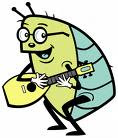Demetrios Papaginos, PhD, Intercostal College;
Ariana Papaginos, 5th grader
Abstract
The overall quality of a night’s sleep as assessed with a standard measure shows a statistically significant correlation with temporary asymmetrical dislocation of external cranial hair upon rising (bed head).
Methodology
Subjects were recruited from among male and female graduate student volunteers with hair length less than 10cm who also had use of a cell phone with camera. The camera was essential to record the condition of the subject’s hair upon rising.
To determine quality of sleep in a more objective manner than simple self-reports, we selected an empirically validated measure, the Zugzwang Inventory of Potentially Predictive Indicators (ZIPPI). It is often used in sleep studies to assess clarity of thought upon waking (1).
Instructions were provided to each subject as follows: Immediately upon awakening each morning, S was to use the camera phone to take a photograph of his/her face and hair, and forward it by picture messaging to a number we provided.* S would then self-administer the ZIPPI measure and retain the response sheet for collection at the end of the week.
Analysis
From the 47 subjects who received the instructions and inventory, n=31 completed the tasks for the full five-day period.
The second author viewed each photograph and assessed the amount of bed head on a five point scale (1 = “none” to 5 = “like totally”).
For each subject, the scores from both the ZIPPI and the bed head assessment were converted to “high” or “low” relative to the median values in their ranges. The resulting value pairs were subjected to chi-square analysis as shown:

Conclusion
There was a statistically significant correlation (p=0.05) between the ZIPPI score and the assessed level of bed head.** With the ZIPPI score previously shown to be a reliable correlate of sleep quality (2), one may reasonably conclude that the appearance of bed head gives an accurate indication of how well someone has slept, and may even preclude the necessity of asking, “How did you sleep?” other than as a social nicety.
The most likely confound to replication would appear to be the reliability of the photographic assessment. However, as evidenced within social group interactions (3), there are no more finely calibrated and eloquent tonsorial critics than 10-11 year old girls.
-----
Footnotes
*The majority of subjects spontaneously reported that this photography-and-forwarding task was something he/she could do “in my sleep.”
**There were no significant M-F differences relative to the measures in use, but there were large M-F differences in both expressed anxiety and time to resolution of bed head; this merits further study.
-----
References
1. Zugzwang, H. D. P., and Papaginos, D., “An Inventory of Potentially Predictive Indicators”, Psy Ops, v125, p 13.
2. Papaginos, D., and Zugzwang, H. D. P., “Validating an Inventory of Potentially Predictive Indicators”, Psy Ops, v126, p 11.
3. Papaginos, A., “My 11th Birthday Party at Bonkers Fun House”
-----









